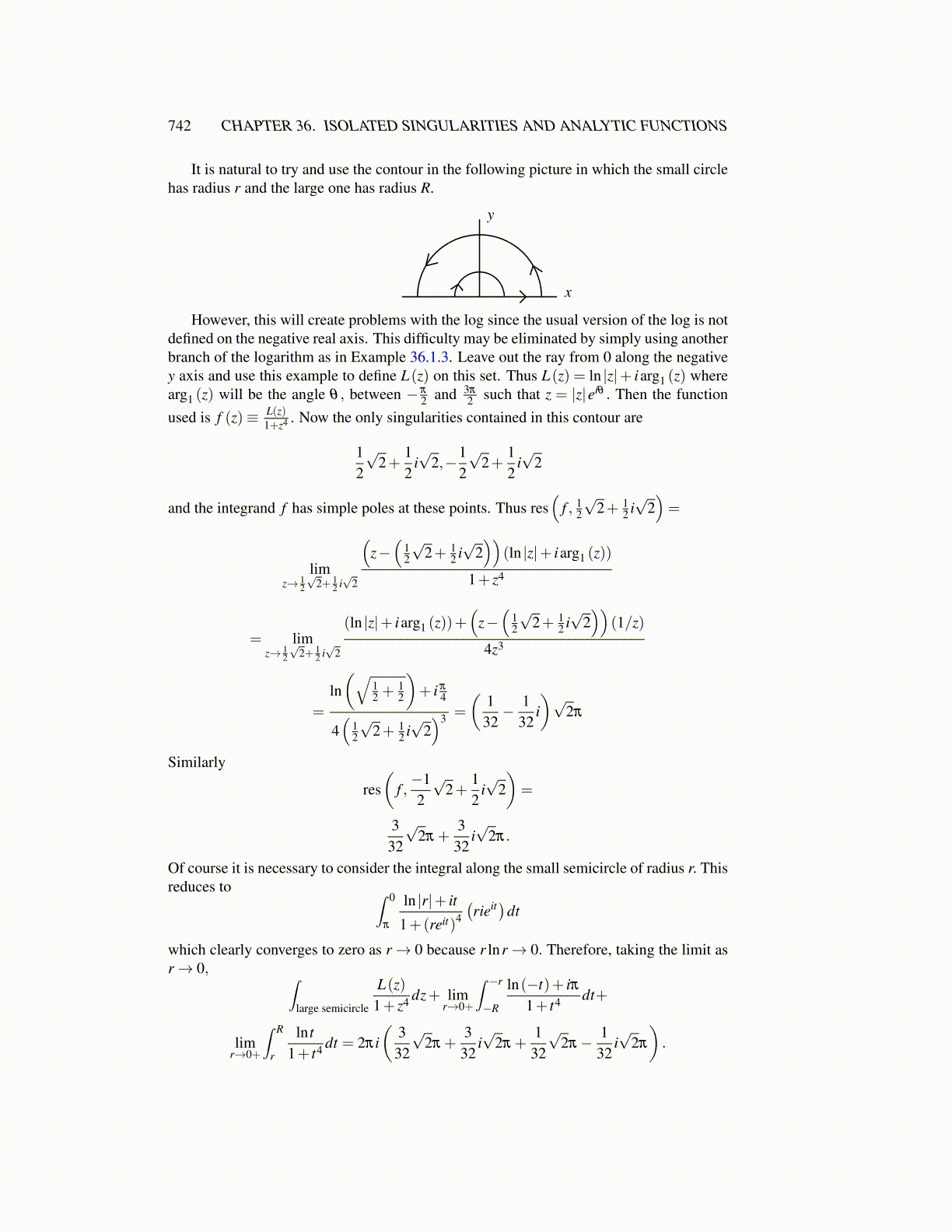
742 CHAPTER 36. ISOLATED SINGULARITIES AND ANALYTIC FUNCTIONS
It is natural to try and use the contour in the following picture in which the small circlehas radius r and the large one has radius R.
x
y
However, this will create problems with the log since the usual version of the log is notdefined on the negative real axis. This difficulty may be eliminated by simply using anotherbranch of the logarithm as in Example 36.1.3. Leave out the ray from 0 along the negativey axis and use this example to define L(z) on this set. Thus L(z) = ln |z|+ iarg1 (z) wherearg1 (z) will be the angle θ , between −π
2 and 3π
2 such that z = |z|eiθ . Then the functionused is f (z)≡ L(z)
1+z4 . Now the only singularities contained in this contour are
12
√2+
12
i√
2,−12
√2+
12
i√
2
and the integrand f has simple poles at these points. Thus res(
f , 12
√2+ 1
2 i√
2)=
limz→ 1
2√
2+ 12 i√
2
(z−(
12
√2+ 1
2 i√
2))
(ln |z|+ iarg1 (z))
1+ z4
= limz→ 1
2√
2+ 12 i√
2
(ln |z|+ iarg1 (z))+(
z−(
12
√2+ 1
2 i√
2))
(1/z)
4z3
=
ln(√
12 +
12
)+ i π
4
4(
12
√2+ 1
2 i√
2)3 =
(1
32− 1
32i)√
2π
Similarly
res(
f ,−12
√2+
12
i√
2)=
332
√2π +
332
i√
2π.
Of course it is necessary to consider the integral along the small semicircle of radius r. Thisreduces to ∫ 0
π
ln |r|+ it
1+(reit)4
(rieit)dt
which clearly converges to zero as r→ 0 because r lnr→ 0. Therefore, taking the limit asr→ 0, ∫
large semicircle
L(z)1+ z4 dz+ lim
r→0+
∫ −r
−R
ln(−t)+ iπ1+ t4 dt+
limr→0+
∫ R
r
ln t1+ t4 dt = 2πi
(332
√2π +
332
i√
2π +1
32
√2π− 1
32i√
2π
).